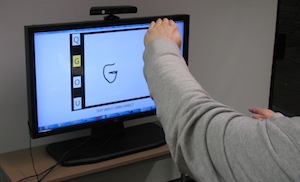Tristan Henderson is co-editing a special issue of the International Journal of Human-Computer Studies on Privacy Methodologies in HCI.
http://www.journals.elsevier.com/international-journal-of-human-computer-studies/call-for-papers/special-issue-of-international-journal-of/
Topic:
Privacy has become one of the most contested social issues of the information age. For researchers and practitioners of human-computer interaction (HCI), interest in privacy is not only sparked by these changes in the scale and scope of personal information collected and stored about people, but also because of the increasing ubiquity, sociability and mobility of personal technology. However, privacy has proven to be a particularly difficult construct to study. As a construct, privacy is also open to investigation from multiple perspectives and ontological approaches, with key research coming from law, psychology, computer science and economics.
The special issue on privacy methodologies in HCI invites high quality research papers that use a variety of methods where the author(s) reflect on and evaluate the method itself, both as applied in their specific context, and more widely, as well as the privacy aspect under consideration.
Authors are asked to consider these key questions in their papers:
- What was the privacy context being researched?
- Why was the particular methodology chosen for a given context?
- What selection criteria were used? What were the advantages and disadvantages of the methodology?
- How was bias and priming avoided? Was there evidence of a ‘measurement problem’?
- How did the researcher ensure the sample was representative, avoiding sample-based biases?
- What were the results? How could this method be used to study other aspects of HCI and privacy?
Submission instructions:
Manuscripts should generally not exceed 8000 words. Papers should be prepared according to the IJHCS Guide for authors, and should be submitted online according to the journal’s instructions. The IJHCS Guide for authors and online submission are available at http://www.elsevier.com/locate/ijhcs.
Important dates:
- Submission deadline: October 15, 2012
- Notify authors: January 5, 2013
- Publication date: late 2013
Guest Editors:
- Dr. Asimina Vasalou (University of Birmingham)
- Dr. Tristan Henderson (University of St Andrews)
- Dr. Adam Joinson (University of Bath)


 Professor
Professor 




